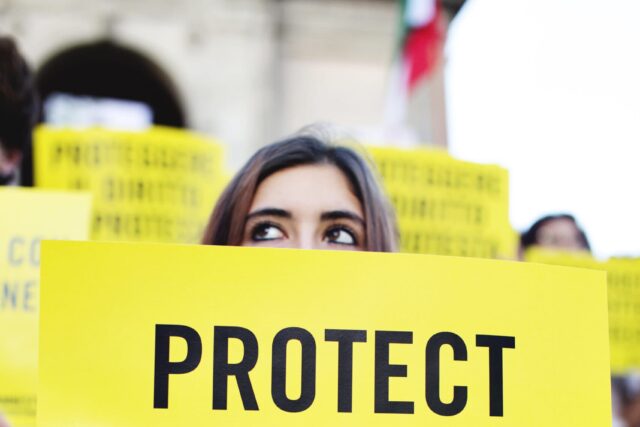In recent years, protests across the globe have embraced leaderless, horizontal structures that defy conventional ideas of hierarchy and centralized authority. From Occupy Wall Street to Extinction Rebellion, the Umbrella Movement in Hong Kong to France’s Yellow Vests, the image of protest has shifted from charismatic figures with megaphones to crowds that speak and act collectively.
Rather than relying on top-down leadership, these movements are guided by collective values, decentralized coordination, and participatory decision-making. This article explores how such protests work, what makes them resilient and powerful, and where their greatest challenges lie.
What Is a Leaderless Protest?
A leaderless protest is a form of collective action that operates without centralized leadership. No single person or core team dictates goals or strategies. Instead, the movement functions through open participation, horizontal structures, and often consensus-based decision-making.
Key features of these movements include:
- Open assemblies and public forums
- Autonomous working groups
- Shared resources and communication platforms
- Rotation of roles and responsibilities
- Lack of official spokespersons
- Emphasis on transparency and inclusion
These structures are typically referred to as horizontal, as opposed to the hierarchical or vertical model of traditional political organizations.
Why Protest Without a Leader?
There are several reasons movements choose to remain leaderless.
- Ideological alignment
Horizontalism reflects values like equality, autonomy, and participatory democracy. Adopting hierarchy may contradict the principles the movement advocates. - Resistance to repression
Without a public leader, it becomes harder for authorities to arrest, discredit, or silence the movement by targeting individuals. - Encouragement of participation
Leaderless models give more people a voice, encouraging creativity, engagement, and shared ownership of decisions. - Flexibility and resilience
Decentralized networks can survive pressure. If one node is dismantled, others remain intact and operational.
How Do Leaderless Movements Coordinate?
Despite lacking a central command, leaderless protests are far from chaotic. They use a combination of tools, processes, and technologies to organize action.
- General assemblies
Public gatherings where proposals are debated and adopted through direct or modified consensus. These meetings are often open to all participants. - Affinity and working groups
Smaller self-organized units focus on specific tasks: logistics, media, legal aid, safety, outreach. They coordinate with one another through federated or networked models. - Hand signals and process roles
In large crowds, hand gestures help manage discussion flow (agreement, disagreement, clarifications). Facilitators and timekeepers may guide the process without assuming authority. - Digital coordination tools
Encrypted apps like Signal and Telegram, collaborative platforms like Loomio or shared spreadsheets, allow remote participation and real-time updates. - Open-source campaign models
Movements often publish toolkits, protest guidelines, and decentralized strategies so that others can replicate them autonomously.
Case Studies of Leaderless Protests
- Occupy Wall Street (USA, 2011)
Occupy is often cited as the blueprint for modern horizontal movements. General assemblies at Zuccotti Park became a space for participatory democracy, and working groups handled everything from sanitation to media. - Hong Kong Protests (2019)
These protests embraced a “be water” philosophy — flexible, mobile, and decentralized. Protesters coordinated flash mobs and supply chains without a core leadership, relying heavily on encrypted messaging and crowd-sourced information. - Extinction Rebellion (UK/global, 2018–)
While XR has national representatives, its structure is intentionally decentralized. Local chapters can act autonomously under the movement’s shared principles and values. - Gilets Jaunes (France, 2018–2019)
The Yellow Vests emerged without party backing or designated leaders. Their coordination relied on Facebook groups and direct communication at roundabout occupations. - Chilean Student Uprisings (2019–2020)
Students and citizens mobilized across the country, initially without visible leaders, using social media and spontaneous assemblies to coordinate protests against inequality and austerity.
Advantages of Horizontal Protests
Leaderless movements offer several distinct advantages.
- Broad participation: Anyone can contribute, regardless of background or status
- Harder to suppress: Without central targets, the movement is less vulnerable to disruption
- Creativity: Open structures often produce a wider variety of tactics and artistic expressions
- Stronger group identity: When everyone has a stake in decision-making, solidarity tends to grow
- Cultural impact: These movements model alternative ways of organizing society beyond protest itself
Key Challenges and Limitations
Despite their promise, horizontal movements face serious obstacles.
- Decision-making complexity
Reaching consensus can be slow and frustrating, especially in large groups with diverse opinions. - Lack of strategic clarity
Without long-term planning or leadership, movements may lose direction or respond reactively to events. - Messaging difficulties
In the absence of spokespersons, external communication can become fragmented or unclear. - Coordination risks
Autonomous actions by loosely affiliated groups can conflict, or be exploited by opponents to discredit the broader movement. - Sustainability
Burnout is common when responsibilities are not clearly distributed or when no one is accountable for long-term logistics.
Hybrid Approaches and Evolving Strategies
Some movements experiment with models that blend horizontal values with minimal structure. Examples include:
- Rotating facilitators or spokespersons with strict mandates
- Transparent delegation for specific tasks, limited in scope and time
- Use of digital polls or voting to make collective decisions quickly
- Federated networks where local units remain autonomous but share principles
These adaptations aim to retain participatory spirit while improving effectiveness.
The Future of Leaderless Resistance
As distrust in institutions continues to rise and global connectivity expands, leaderless movements are likely to remain a dominant form of protest. Their flexibility and responsiveness make them especially suited for fast-changing political environments.
Technology plays a growing role in enabling and shaping these efforts. From secure messaging to real-time mapping of police movements, digital tools are essential in maintaining autonomy and cohesion. At the same time, surveillance, disinformation, and infiltration pose growing threats.
The next phase may involve even more fluid models of coordination — where protest becomes a living, self-organizing organism, adaptable to any context.
Conclusion
Leaderless protests reflect a profound shift in how people imagine power and collective action. Rather than waiting for a figurehead to emerge, individuals take initiative, collaborate, and build from the ground up.
Though messy and imperfect, horizontal movements offer a glimpse of democracy in motion — not just in what they demand, but in how they operate. Their strength lies not in the absence of leadership, but in the presence of collective will.
In a world shaped by inequality, surveillance, and political inertia, leaderless resistance may be not just a strategy — but a vision of the future.



MOST COMMENTED
Largest protests
How Leaderless Protests Work: Horizontal Movements and Collective Decision-Making
Forms of protests
The Right to Protest: How Rallies and Pickets Influence a Democratic Society
Forms of protests
Digitalization of Protest: How Social Media and Technology Are Changing Street Demonstrations
Largest protests
Digital Technology Revolution – Reshaping Modern Activism
Forms of protests
Advanced Acoustic Protection for Confidential Discussions
Forms of protests
Psychology of Protest: What Motivates People at Rallies?
Largest protests
Rallies Against Air Travel: A Rising Movement in the Climate Crisis Era